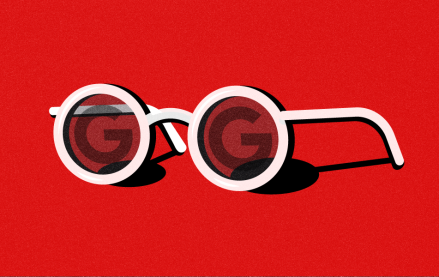During quarantine, audio and connected TV are growing faster than other ad platforms

By Alkistis Chatzidimitriou, strategic solutions lead at Verizon Media
Consumer behavior and media consumption patterns continue to evolve as a result of the coronavirus pandemic. A perceived fear of the negative impact of audience reactions to advertising during the pandemic also adds to uncertainty for brands.
However, findings from GlobalWebIndex show the outlook for advertisers is markedly more positive than initially expected. According to their survey, 85 percent of consumers have a positive or neutral opinion of brands that proceed with normal advertising during the outbreak, going up to 93 percent if that advertising communicates how these brands are responding to the crisis.
Our U.S. Coronavirus Study from March 2020 introduces an additional dimension to help advertisers assess the situation; that of consumer trust. In our survey, 64 percent of consumers especially want to hear from brands they trust during this time.
Thought leaders in this space, such as Mastercard’s CMO Raja Rajamannar, have spoken out on the importance of not going dark during a crisis. The advice to brands is to rethink strategies, messaging and tactics, to prioritize empathy for consumers and communities in distress and to refocus activity toward digital.
This guidance still leaves room for debate. For example, emerging channels may hold answers, but what exactly do marketers need to know about these emerging digital environments and what shifts do brands need to be aware of to inform their activity during the pandemic (and in the longer term of what follows)? In the following sections, we look at what recent data shows in three different channels or environments, all of them impacted by the state of ongoing change.
Connected TV audiences are driving changes to time streaming and viewing patterns
As consumer attention shifts towards streaming video on demand, OTT players have seen significant upticks in new subscriptions and ad-supported traffic. The GlobalWebIndex coronavirus research shows that 52 percent of consumers report spending more time streaming online videos, and this is higher than the increase observed by broadcast TV channels.
Advertisers should also be cognizant of the changes in audience viewing patterns. Over the 60-day period ending May 3, 2020, we saw a marked shift in CTV viewing times throughout the week. Pre-lockdown, weekend impressions would account for as much as 34 percent of the total weekly ad opportunities. That figure falls to 30 percent during weeks spent in quarantine, representing an increase in content being consumed throughout the week. Also, PC and console gaming activity no longer spikes on the weekends and evenings. This will, without a doubt, have an effect on prime-time TV, which has already been impacted by a pause on live sports.
For brands that heavily align themselves with sports or content that has lost relevance during the pandemic — domain analysis becomes a powerful tool to adjust targeting tactics. One notable trend is that apps such as PlutoTV on Fire Stick and Roku are among the top domains for reaching a global audience of sports fans in the fortnight.
To find the most efficient path to their audience, advertisers should run these kinds of checks frequently, especially at a time when historical campaign data may prove to be less reliable at predicting future patterns.
A programmatic-audio listener uptick is driving inventory demand
If connected TV is a favorite channel for viewers during lockdown, audio can be seen as a serious contender to that position. The latest wave of multi-market coronavirus research from GlobalWebIndex published on April 30 showed that 37 percent of consumers are spending more time listening to audio streaming services such as Spotify — going up to 53 percent for Gen Z — and 14 percent are listening to more podcasts.
Based on our analysis of the recent data, this is an opportunity for brands. We are already seeing a strong response as we partner with brands in the podcast space to help their messages to resonate with a larger audience, both prior to and throughout the lockdown.
For example, the “Sorry, Not Sorry” podcast series, produced by RYOT Studio in partnership with Galaxy Chocolate, supports the brand’s mission to inspire women to choose more pleasure in their daily lives — and to do so unapologetically. The campaign, amplified with programmatic audio activity, reached 24 million impressions and 260,000 unique users. Season One of the podcast stayed in Apple’s “New and Noteworthy” section for five consecutive weeks and Season Two launched in March 2020.
Results like these drive demand for guaranteed access to audio inventory. Partnerships can help meet that demand. For example, Verizon Media has direct programmatic guaranteed deals with some of the biggest names in audio streaming via their DSP, locking in guaranteed impressions and unlocking playlist or genre-based targeting, plus first-party data signals to reach highly relevant audiences.
OOH is going digital — at an accelerating pace
Looking outside the lens of the pandemic, outdoor activity has held its own in media plans for many leading brands, not least because of the category’s impact and the opportunity to create a locally relevant, contextual connection in a way that other channels often cannot.
Reinforcing those efforts, the flexibility of programmatic within digital out-of-home advertising, coupled with the lack of upfront investments found in traditional OOH, gives advertisers the control they need to respond swiftly to quickly changing landscapes. As brands redeploy their offline budgets to online spend, a portion of the investments in traditional OOH is likely to flow into DOOH, among other channels — and that was a trend already underway. According to Allied Market Research, the global DOOH market has shown strong compound annual growth rates in the neighborhood of 12.6 percent, with Europe currently accounting for the lion’s share of revenues.
This shift to programmatic was well underway before the beginning of the coronavirus outbreak, standing in stark contrast to the nearly flat year-over-year growth in traditional OOH. Considering factors such as stronger monetization, higher efficiencies and the ability to layer on data in DOOH, it certainly comes as no surprise.
The shifts we are seeing are more than just a blip in consumer media viewing trends. The pandemic and subsequent quarantines have accelerated the pace of the ongoing changes, including the shift in consumer attention from prime-time TV towards AVOD streaming, AR and even entirely virtual real-time experiences.
These emerging media trends are underpinned by a larger lifestyle pivot, one fueled by unprecedented levels of connectivity, and it’s virtually certain that consumer expectations for digital and connected experiences will only rise. It’s a vital opportunity for advertisers to tap emerging channels and capture their innovative opportunities to meet audience needs.
More from Digiday

The AI hype cycle is rewriting ad tech’s M&A math
As talk of a dot-com-style AI bubble grows louder, buyers are shifting from growth-at-all-costs to consolidation and cleanup.

The accidental guardian: How Cloudflare’s Matthew Prince became publishing’s unexpected defender
Cloudflare’s day job is fending off botnets and nation-state cyberattacks, not debating how Google and other AI firms crawl publisher sites.

Omnicom Media kicks off CES with a Google search partnership that drills deeper into intent
Omnicom is working with Google to create a new tool that empowers brands with far deeper insights into how to use search in the AI-powered era, given that historical notions of search marketing have flown out the window.





